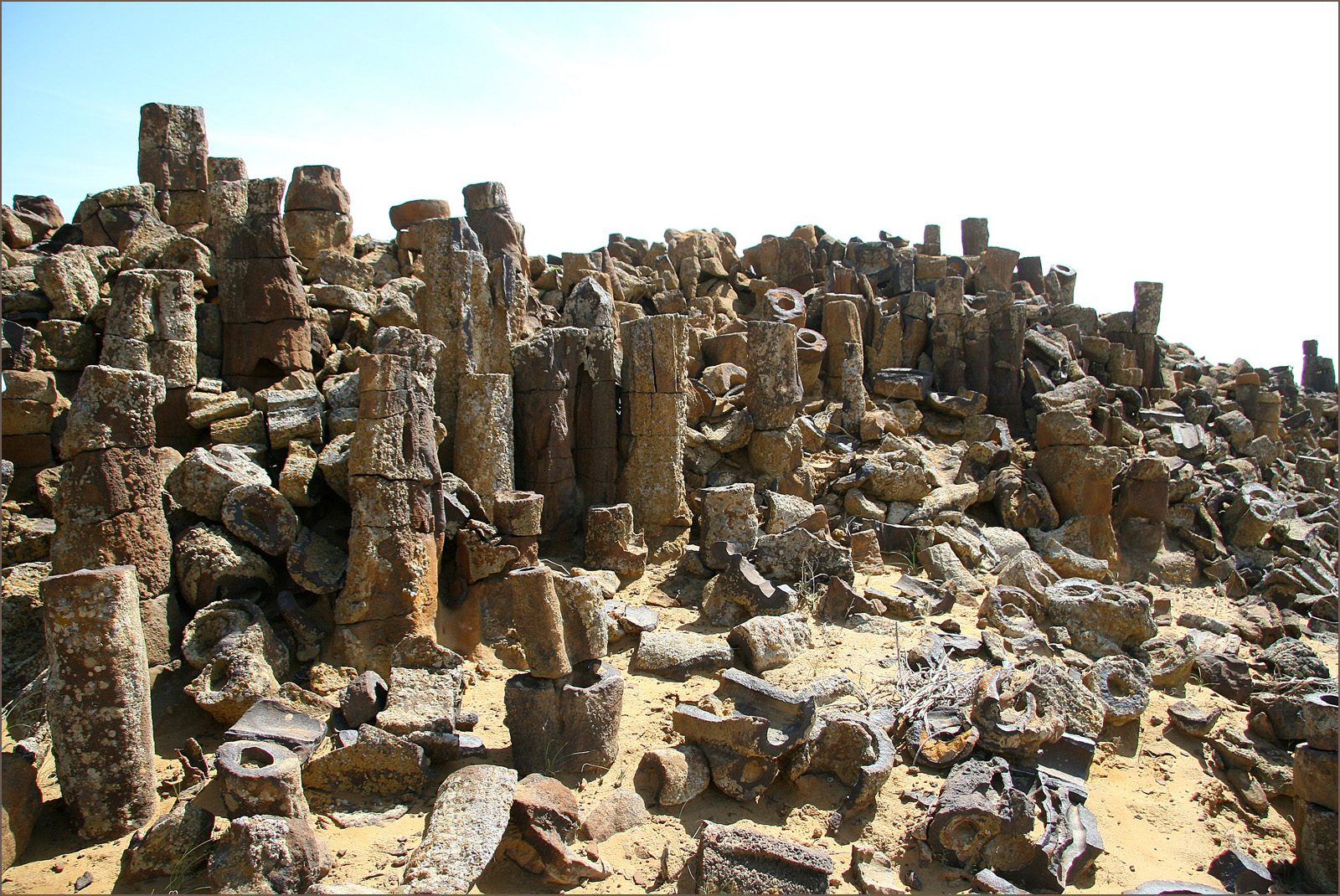Uzbekistan tours are so diverse that after each trip to unexplored places, I can’t wait to write a book about the wonders of Uzbek nature. I had a chance to visit the most unique place in the Kyzylkum desert – Dzharakuduk.
Is Djarakuduk worth travelling? Sure, but it’s useless to look it up on a map. I’s not a town, village or nature reservation, but a cluster of fossilized remains from the Cretaceous period in the middle of the desert. Tourists call this area a stone forest, while palaeontologists name it the Djarakuduk tract. Those strange layers looked like pipes of unknown origin or ruined jars. From a distance, they resembled protruding stumps.
Friends of mine knew about my passion for paradoxical phenomena, so they presented the Tashkent Kyzylkum tour with breathtaking excursions. The route through the desert wasn’t frightening, as I had long dreamed of exploring the red sands and posting a cool photo report on social media. It was planned to stop in Navoi, Uchkuduk, Mingbulak, and Nukus as part of the excursion. Departure to tourist sites was intended from each of the mentioned towns.
It was exciting in all places because travelling across the Kyzylkum desert is comparable to a fantastic adventure. Now I will emphasize the mysterious Djarakuduk. The program included a visit to the Mingbulak saline trench, but not to Djarakuduk itself. It was too dangerous to drive deep into the desert because there were no landmarks and it was very easy to get lost. I decided to act on my own.
The point is that I was interested in the Djarakuduk tract, where fossilized remains of dinosaurs were found. They inhabited the area more than nine million years ago. The remains have been preserved to this day, but they were moved to the local history museum near the village of Mingbulak. I had to travel in an old UAZ over quicksand because I wanted to see the “stone forest” too much.
Let me underscore that the usual Kyzylkum Desert tours do not include a visit to Djarakuduk. In order to admire the fossils, you have to arrange with Mingbulak carriers and take a guide as well. Even locals have a hard time finding this location among the steep escarpments. However, it is well known by palaeontologists, who carefully conceal the coordinates so that onlookers like me couldn’t snatch the fossilized fragments for souvenirs.
When I got closer to the stone forest, it became clear why it was named that way. The first thing that comes to mind is the association with a bamboo grove where all the trees were cut down, leaving bare stumps. As you approach the stumps, their size gets larger, some of them resembling pillars. Others, on the contrary, were small, knee-high or even shorter. They were empty inside, that’s why I called them pipes, but no one knows the origin of those bizarre objects.
There are two hypotheses, one of which says it was the fossilized remains of ancient trees. They supposedly grew here millions of years ago. The argument is unconvincing because, in the Cretaceous period, the Kyzylkums were covered by the water of the world ocean. There was no way a forest could have grown underwater. Skeletons of aquatic dinosaurs found by archaeologists prove that there used to be an ocean there.
The second version is more plausible: gas eruption from the core and mantle caused a thermochemical reaction when it came into contact with the oxygen. The sand melted and took the shape of pipes as the gas jet released. Nevertheless, you can see this kind of natural phenomenon only in Djarakuduk. There was an immense amount of fragments of those pipes there. To bring some as a souvenir would be like owning a moonstone.
People happen to come to Djarakuduk very rarely. Geologists and archaeologists visit the place on a research mission. The Kyzylkum desert excursion made me feel like a pathfinder or a scientist, but I am just an inquisitive traveller. I still feel a sense of pride, because few people know about the existence of the stone forest, and those who do, are unlikely to have been there. The Djarakuduk fossils made my Kyzylkum journey the most exciting and informative








